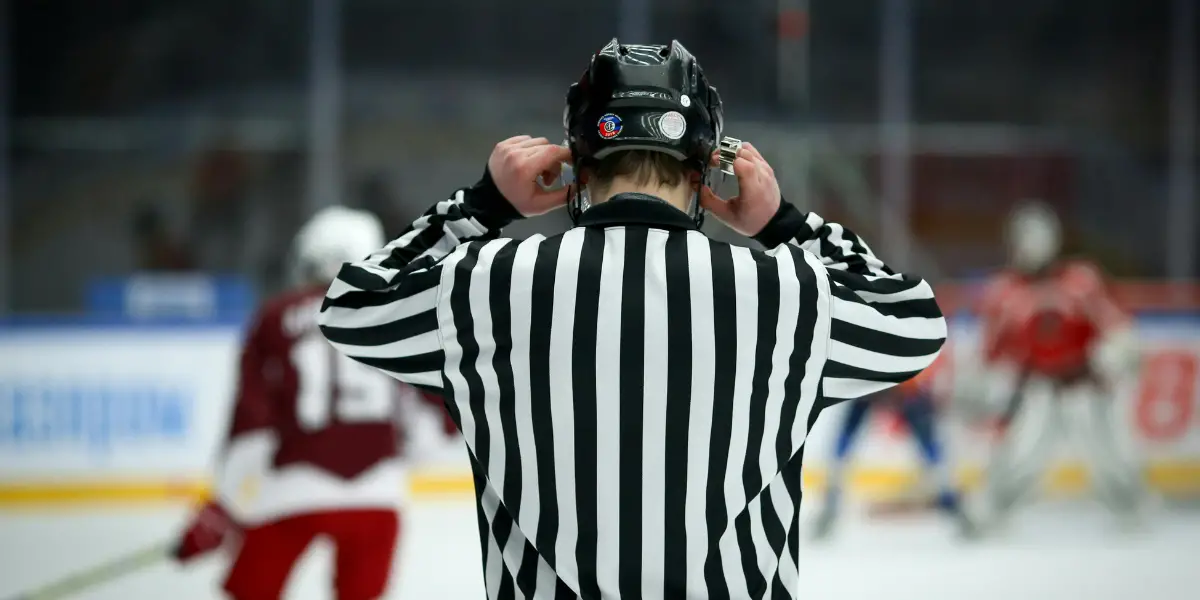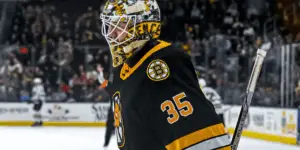
Slashing? Boarding? Cross-checking? If you’re new to hockey, you may be hearing these words thrown around a lot but not quite understanding what the referees are really saying. No worries– it’ll all be explained here! The key thing to know is that there are different consequences for different penalties, depending on the type. Some penalties can land a player in the penalty box for 2 minutes, 5 minutes, or even 10 minutes. Some penalties can be either 2 or 5 minutes, depending on their level of severity. The most severe type of penalties, called “match penalties,” will result in the player being ejected from the game entirely. Let’s break down each penalty, starting with 2-minute minors.
What is a 2-Minute Minor Penalty?
A 2-minute minor penalty is any action that warrants the player serving 2 minutes in the penalty box, where they must sit out of the game. This results in their team only having 4 players on the ice while the opposing team has 5. The team with more players is on a Power Play because they have the advantage of having a player who cannot be directly defended. In the NHL, the penalty can be ended early and the player released from the box if the opposing team scores, and in the PWHL, a shorthanded goal results in the player being released as well. In some cases, the referee can decide that the minor penalty is more severe and issue a double-minor, landing the player in the box for 4 minutes.
Boarding | Rule 41
An illegal action that causes a defenseless player to be thrown directly into the boards or the sides of the rink.
Charging | Rule 42
When a player takes steps to speed up before checking (or hitting) another player or jumps at another player forcefully.
Cross-checking | Rule 59
When a player lifts their stick off the ice with both hands to forcefully check another player
Delay-of-game | Rule 63
When a player makes an action to intentionally stall the game, per the referees’ judgment. Some examples include skaters holding or freezing the puck, shooting the puck outside of the playing area, or deliberately displacing the goal from its normal position.
Elbowing | Rule 45
Using an elbow to forcefully hit another player, which may or may not cause injury.
Embellishment | Rule 64
A highly controversial penalty is given when a player is thought to exaggerate or make up the penalty committed against them or fake an injury. It may also be referred to as “diving.”
High Sticking | Rule 60
When contact with another player is made with a stick raised above the player’s shoulders when they are in control of the stick. Accidental contact is permitted, such as when a player is in the process of shooting.
Holding | Rule 54
Grabbing another player to restrict their movement and play, whether or not they are in possession of the puck.
Hooking | Rule 55
The act of using a stick to slow another player down or restrict their play.
Interference | Rule 56
The use of physical contact to slow another player down. This can be done with the stick, hands, or body position.
Kneeing | Rule 50
Creating a hit on another player by leading with the knee and, in some cases, extending the leg.
Slashing | Rule 61
The act of swinging a stick to hit another player, whether or not contact is made, with the exception of non-aggressive stick contact to the front of the legs. Any forceful chop to the opponent’s body or stick that is not an attempt to play the puck would be considered slashing.
Roughing | Rule 51
Any unnecessary and aggressive contact toward another player, such as pushing after the whistle has been blown or punching/slamming another player.
Tripping | Rule 57
The use of a stick, leg, foot, arm, hand, or elbow to trip an opponent. Accidental trips will not be penalized.
Unsportsmanlike Conduct | Rule 75
Any negative act, gesture, or verbal assault against another player, coach, or official. Both players and non-playing Hockey Club personnel (such as the coach) may be given an unsportsmanlike conduct penalty.
What Are 5-Minute Major Penalties in Hockey?
Major penalties are more severe in nature, leading to harsher consequences. When receiving a major penalty, the player must remain in the box for the entire 5 minutes, regardless of whether the other team scores or not.
Butt-Ending | Rule 58
Using the end of the stick opposite of the blade to hit or attempt to jab another player.
Checking From Behind | Rule 43
Forcefully hitting a player who is not aware of the impending hit and is, therefore, unable to protect or defend themselves. The contact is made on the back part of the body.
Spearing | Rule 62
When a player jabs their opponent with their stick blade, whether or not contact is made.
Leaving the bench during an altercation, holding a player’s facemask, and pushing off of an opponent with your skate are also all considered major penalties. A handful of minor penalties can also be assessed as major penalties if they were done with the intent to injure the opposing player.
Fighting
Are you allowed to fight in hockey? The short answer is yes, however, it does not come without consequences! When players fight, the referees must determine who is the aggressor and who is the instigator. The aggressor is the player who is determined to be the winner of the fight, and the instigator is the player who initiates the fight, whether verbally or physically. The aggressor will receive both a major penalty and a misconduct penalty. The instigator of a fight will receive a minor penalty, a major penalty, and a misconduct.
What are 10-Minute Misconduct Penalties? What are Match Penalties?
When a player receives a misconduct penalty, they will be forced to sit in the penalty box for 10 minutes, and another teammate will have to serve the time of their original penalty (2 to 5 minutes). If a player receives a match penalty, they will be ejected from the game entirely, and another player will serve the penalty for their initial infraction. These are the most serious penalties in hockey and are given when the player’s actions are seen as extremely serious, harmful, or egregious.
Other Penalty-Related Information
What are Penalty Shots?
In some cases, the referee will assign the player who drew the penalty a penalty shot rather than having the offender serve time in the box. These are most often called when a skater with the puck has a clear path to the goal but is stopped by an opponent with contact that is against the rules of the game. When a penalty shot is called, the puck carrier gets one chance to score with no other players involved except the goaltender.
What is a Delayed Penalty?
Penalties are not always called right away. Sometimes, the referee will raise their arm to indicate that a penalty has occurred but that it will not be called until the offending team touches the puck.
Each penalty has a specific action or hand motion associated with it that the official will use when they announce the infraction. For examples of hand motions, check out this article from Hockey Monkey.
There you have it! A complete guide to all of the penalties you may see when watching a hockey game. For more Hockey 101 content, visit the “Hockey 101” section of Inside the Rink’s website here.
Discover more from Inside The Rink
Subscribe to get the latest posts sent to your email.



